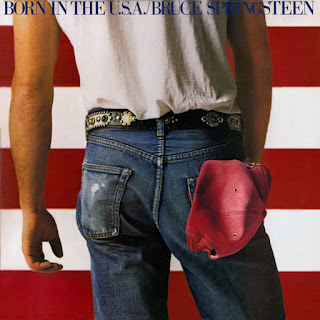The first concert I ever attended was a real doozie. Bruce
Springsteen and the E Street Band during the Born in the USA tour. Floor seats
at Giant’s Stadium in the Meadowlands. In New Jersey, the Boss’ home state.
It was one for the ages. He played his classics such as Thunder Road, Tenth Avenue Freeze Out and The River. He also played his new stuff, including the album's title track, Cover Me and Dancing in the Dark.
Since the concert was at night, the stage was lit up from
end to end. The music blared. Everyone wanted to capture that moment on the
cameras they were allowed to bring into the stadium. A lot of people way back in row ZZ clicked furiously
with their camera flashes popping away.
Boy, were they going to be disappointed with the results of
their shots. Why would that be? Isn’t that the reason why camera flashes are
installed in the first place, to get shots in dark situations?
Well, yes and no.
For my friends at the concert, they needed to realize that
their camera’s onboard flash is really only good for about 10 to 12 feet, so
trying to shoot the stage at that concert was really just going to light up the
backs of the heads of the people sitting in front of them. This image from the
Digital Photography Forum, illustrates just how quickly the flash falls off in
a dark room. There is no chance that flash was going to make it to the stage.
Also, in modern cameras, when the flash is activated, the
camera adjusts to make the sensor less sensitive, since the subject will be
flooded with light from the flash. The stage will look more subdued, and the image
quality will suffer.
Plus, your flash? It’s annoying to everyone around you! Many
concerts and museums won’t allow you to use it.
 |
| Higher ISO settings are more light sensitive |
So, how do you get low-light shots without a flash? To
accomplish this, we come back to the settings on the camera to allow it to
become more sensitive to light. As I had written about before, adjusting the
shutter speed to something slower and aperture size to something larger, you
can get some awesome shots in the dark.
Another setting I didn’t mention is the sensor’s ISO or film speed. This is a number that is given from 100 all the way up through several tens
of thousands. The higher the number, the more sensitive the sensor – or the
film, back in the day – is to light. Unlike film, where you had to shoot an
entire roll of a particular speed film, your digital camera’s sensor adjusts to
the light situation, allowing you to get more out of a dark image when the
image calls for it.
The image I am really proud of is this one. I was visiting
my father at his home in northern New Jersey around the time of his birthday in
late January of this year. It happens that our trip coincided with the full
moon as well as the lunar eclipse on the 21st. Earlier in the day,
there was mix of rain and snow, but as night fell, the skies cleared and the
temperatures plummeted. Once the moonlight fell on the snow, I realized I
wanted to get a shot of what I saw out of his window. Without a tripod, I steadied
the camera on a stack of books and took this shot.
The camera was in automatic mode, but it realized
that I was attempting to shoot a very dim subject using only the moonlight. The
results were so impressive, I had this one enlarged and it is hanging in my
living room.
As a rookie photographer, it’s a great idea for you to try
your hand at shooting under different lighting conditions and see what you can
accomplish. You never know what you will have until you take that picture.

































